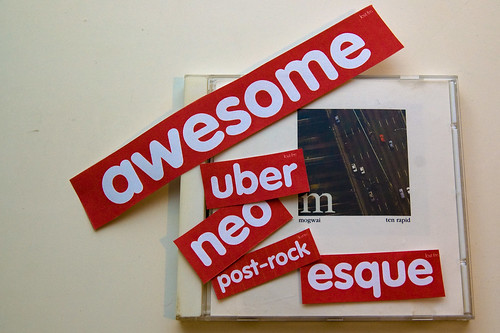I finished my first semester of teaching in July and the final tests from our first year students revealed some interesting web 2.0 insights. Students were asked to define a few web 2.0 terms besides answering more in depth questions. We read and graded over 300 exams and I took some notes while grading. Some answers obviously showed a lack of studying but other answers made me look at things I take for granted differently, for example:
Folksonomy: The term used for the collective filtering of webpages through the practice of “tagging.” Example: Tagging YouTube movies
This student has seen tags on YouTube but has not quite grasped what they are or do. The answer is an interesting mix of the concept ‘Wisdom of the Crowd’ and tagging and tags as links that may be used to filter.
Folksonomy: a website that relies on user generated content to exist.
Folksonomy: Economic model that works with tags. Example: Tags = rating
Folksonomy: Economy based on knowledge
Once again these looks like a lucky guess but then again if you think of YouTube or Amazon they are not that far fetched. The rating concept may also come from tagclouds with weighed tags that could be interpreted as ratings. The more often an object is tagged with the same term, the more relevant it is. Tags as recommendations.
Folksonomy: the way things are being found on websites with the use tags.
What surprised me most is that a lot of students described tags as a type of hyperlinks. Tags are often links but tags in itself are not hyperlinks. However, most of the examples of tag use we showed the students on Last.fm, Flickr and YouTube are hyperlinks. The practice and use of tags have transformed tags into a type of hyperlinks. Tagclouds have transformed tags into a type of recommendation and filtering tool.

Great article. I sometimes struggle to explain the folksonomy concept to others (even colleagues who should already know). The dry definition is easy to rattle off, but to make the concept ‘click’ for their use of content on websites is a whole other story.
Any thoughts?
One way may to get them acquainted with a tagging service such as delicious. One of the best ways to get to grip with the concept is by learning how to tag and see how folksonomies arise.
I think one of the “problems” our students encountered was that we only showed them the application of tags and the result in tag clouds which they then associated with links and filtering.
You make some good points.
There’s a great video on ted.com that you could point anyone to if they are having a problem understanding folksonomy.
http://www.ted.com/index.php/talks/clay_shirky_on_institutions_versus_collaboration.html
I also love the fact that tags are becoming more than just tags and are being used for searching/filtering/recommendations
Thank you for the great video recommendation. I will definitely keep it in mind as illustrative teaching material next semester.
It wasn’t so long ago that I was still in college myself and reading your statement about “lack of studying” reminded me how not all students are all that interested in the material.
This particular example is quite illustrative of this fact because if you’re asking for the common definition of a concept, as you were here, it’s really just a matter of either cramming or truly understanding.
Thanks for the regained insight Anne.
I hope the test question wasn’t really formulated as “What is Folksonomy?” though (precisely because of the cramming aspect) ;-)
P.S.
Non-threaded discussion mode makes multiple separate discussions in the commentary section a hassle. This way you’re limited to mostly a discussion with the author of the original post. If you hadn’t thought about this before, and think it makes sense you can change the setting in WordPress’s Discussion options. But I digress ;-)